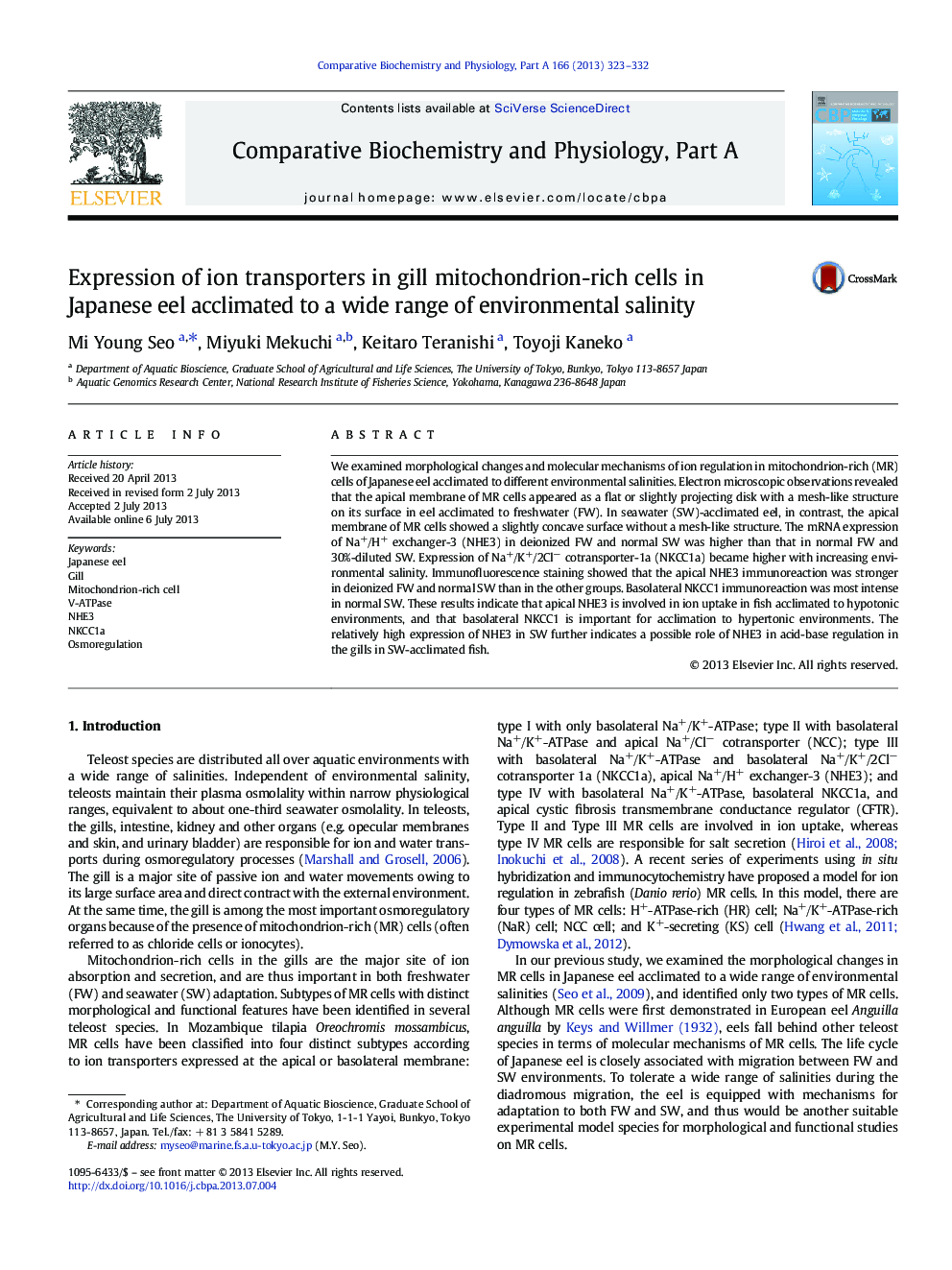| Article ID | Journal | Published Year | Pages | File Type |
|---|---|---|---|---|
| 10818819 | Comparative Biochemistry and Physiology Part A: Molecular & Integrative Physiology | 2013 | 10 Pages |
Abstract
We examined morphological changes and molecular mechanisms of ion regulation in mitochondrion-rich (MR) cells of Japanese eel acclimated to different environmental salinities. Electron microscopic observations revealed that the apical membrane of MR cells appeared as a flat or slightly projecting disk with a mesh-like structure on its surface in eel acclimated to freshwater (FW). In seawater (SW)-acclimated eel, in contrast, the apical membrane of MR cells showed a slightly concave surface without a mesh-like structure. The mRNA expression of Na+/H+ exchanger-3 (NHE3) in deionized FW and normal SW was higher than that in normal FW and 30%-diluted SW. Expression of Na+/K+/2Clâ cotransporter-1a (NKCC1a) became higher with increasing environmental salinity. Immunofluorescence staining showed that the apical NHE3 immunoreaction was stronger in deionized FW and normal SW than in the other groups. Basolateral NKCC1 immunoreaction was most intense in normal SW. These results indicate that apical NHE3 is involved in ion uptake in fish acclimated to hypotonic environments, and that basolateral NKCC1 is important for acclimation to hypertonic environments. The relatively high expression of NHE3 in SW further indicates a possible role of NHE3 in acid-base regulation in the gills in SW-acclimated fish.
Related Topics
Life Sciences
Biochemistry, Genetics and Molecular Biology
Biochemistry
Authors
Mi Young Seo, Miyuki Mekuchi, Keitaro Teranishi, Toyoji Kaneko,
